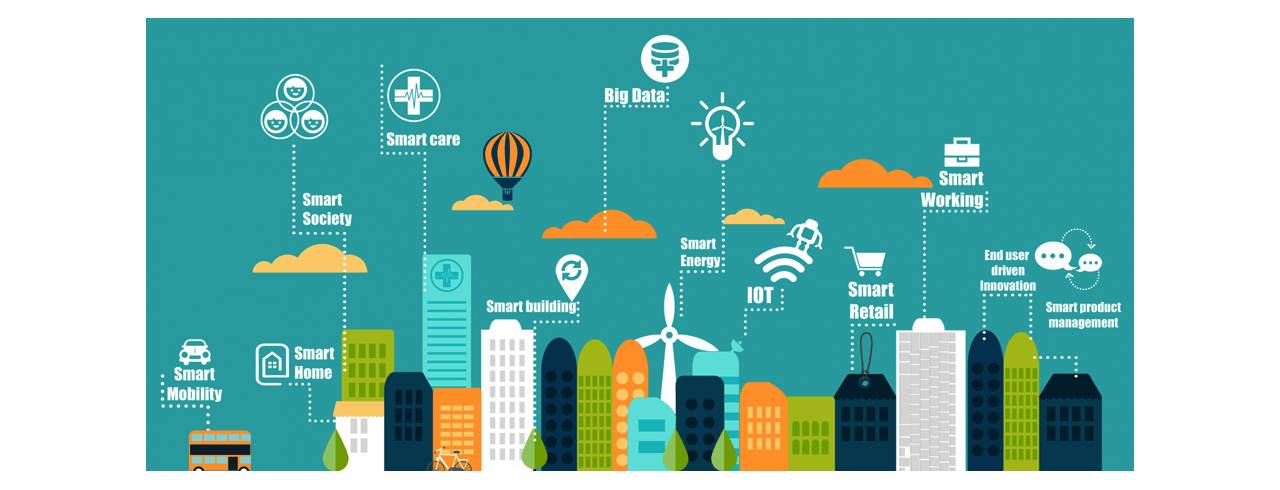Retailers throughout the country are starting to reopen commercial spaces after being obliged to do so for several months. Additionally, they must maintain an atmosphere free of hazards for both their employees and customers.
As a result, retailers have to change their business practices to ensure that they provide a great consumer experience while maintaining adequate social distancing & cleanliness.

We are seeing the rise of the IoT in the retail industry as a critical tool for streamlining operations while increasing productivity and adhering to regulatory requirements for worker safety and health protection. It's no longer science fiction; it's a tool that can assist merchants in adapting to a new business environment and regaining their former prominence.
Things that communicate with each other and exchange data over an internet connection are known as IoT (Internet of Things). Consumers' shopping experiences can be enhanced with the internet of things retail technology. There are several ways to do this, including using foot traffic tracking software, connecting selling tablets to online stores or cash registers, or even creating a mobile storefront.
To ensure the safety & authenticity of retail inventory, warehouses must be monitored. This has traditionally been done manually, changing factors like humidity to ensure that products are kept in ideal circumstances. Retailers will have to find ways to limit employee traffic that could exacerbate the chance of spreading COVID-19 while still safeguarding their products under new guidelines. "
To provide remote retail personnel with real-time data on inventory status, IoT systems can be placed across warehouses. Inventory levels can be remotely monitored via automated reporting using intelligent sensor technologies, guaranteeing that warehouses have enough stock to satisfy fluctuating client demand. To avoid theft or manipulation, these devices can inform the location and movement of goods. In addition, containers can be remotely checked & changed for pressure and temperature, reducing the risk of human interaction and the spread of pathogens.
Capacity Monitoring in a Warehouse
When brick-and-mortar businesses reopen, retailers must also examine how they will provide a safe atmosphere that fosters social separation. According to new safety requirements, customers should be limited to 50% less than their normal occupancy at any one moment.
Counting customers with the assistance of security personnel at the entrance and departure points are susceptible to human error and can result in safety requirements being violated. Stores can just use retail IoT sensors to measure customers and receive intelligent alerts to ensure social disassociation is observed.
Instead keeping an eye on occupancy and capacity extends far beyond the urgent public health and safety threats posed by coronaviruses. In the future, shops will be able to better understand peak hours, peak seasons, and typical dwell periods by getting access to precise data on footfall. As a result, they will be able to make more informed judgments about store opening and closing times and the number of employees needed to maintain them.
Flow and demographics of customers
IoT retail use cases may provide merchants with a wealth of information at a more satisfactory level by showing them which parts of their area are filled and empty. Store layouts can be improved and bottlenecks avoided by observing patterns that develop over time.
Tracking consumer behaviour in various zones & aisles can help retailers improve the customer experience by determining how long funding is available in a particular area. For example, customer demographics such as gender and age may be pinpointed within a fraction of a second using airport-grade accuracy thanks to sensor technology.
Cleaning schedules and regimes can also benefit from this information. Cleanup efforts can be more concentrated and effective if the retail spaces most often trafficked parts and less frequently trafficked are identified. COVID-19 was still detectable on metal for up to four hours, on paper for 24 hours, and on plastic & steel for up to 72 hours in a research published in The New England Journal of Medicine.
As a result, regularly touched surfaces must be kept immaculate. To prevent the spread of germs and keep everyone safe, tenancy data can define surface areas that are frequently touched by both employees and customers, such as doorknobs. These areas can then be cleaned commonly during the day.
An ultra-low-power Bluetooth® LE 4.0 module based on the MinewSemi m1805 SoC with a rising PCB antenna & support with external antenna connection, the BLE module's M1805 – MS48SF2 module is a small, cost-effective, highly adaptable device. Your Bluetooth design will be able to reach the market sooner and with less risk thanks to its comprehensive regulatory certifications.
Temperature and humidity can significantly impact the chance of survival of viruses, and IoT sensors can help prevent this by monitoring these variables. Studies show that keeping the relative humidity in your environment between 40% and 60% can reduce the bio-burden of virus agents in the space and the infectiousness of many viruses in the air.
How to use Smart alerts from the Internet of Things in retail?
When environmental parameters depart from their optimal range, intelligent alerts can also be set up to notify personnel, and corrective action can be done automatically using a Building Management System. It is possible to save money and reduce CO2 emissions by keeping an eye on environmental conditions. The monitoring system can also reveal systemic waste and inefficiency and minimise energy consumption.
What is the retail store's future?
Both short-term regulatory compliance and long-term operational convenience and customer experience can be improved by smart retail IoT. Internet of Things (IoT) technologies will make it easier for retail establishments of tomorrow to keep up with the rapid and constant shifts in consumer behaviour.